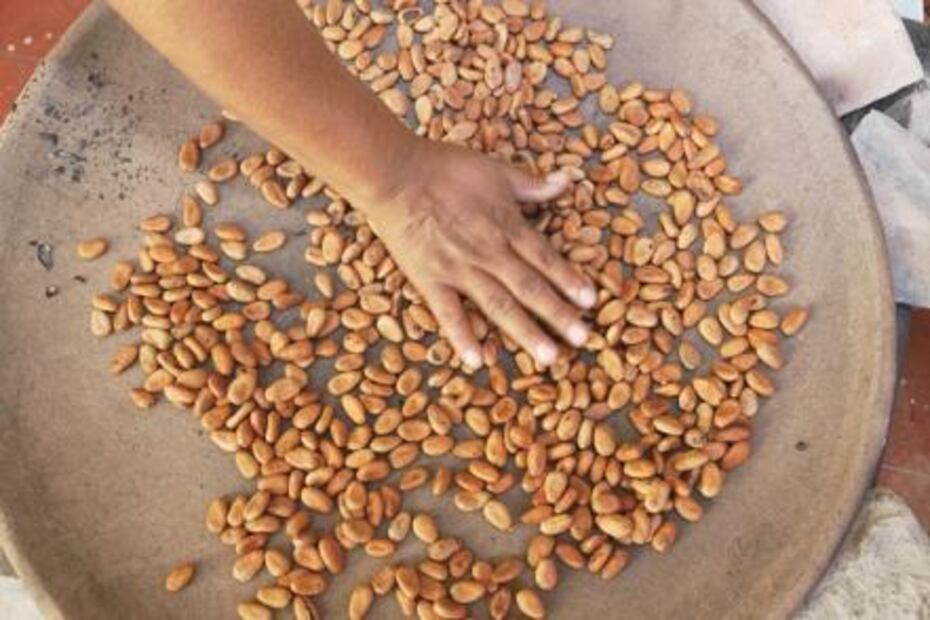When Germán Santillán and Ruth Valladares created their chocolate company, they had no idea that in addition of generating jobs to decrease poverty in Oaxaca , they'd also boost the rebirth of growing cacao in this state.
Germán and Ruth joined their talents to create Oaxacanita , an artisanal chocolate producer.
Their company has its base of operations in Tamazulápam , a community in the Mixtec region considered to be the poorest area of Mexico, and where recently the National Council for the Evaluation of Social Development Policy (CONEVAL) located the poorest municipality in the country: Santos Reyes Yucuná .
Germán says poverty in the region is affecting at least 155 communities due to a lack of job opportunities. This was the reason why Ruth and he decided to found their company in the Mixtec region – a project which today has given a job to 26 families.
The idea to fight poverty with chocolate was born in 2013, when Germán, who graduated from the Technological University of the Mixtec Region made his professional practices at the China Chamber of Commerce & Technology Mexico. There, a talk opened up a new horizon of commerce opportunities for him.
A native from Tamazulápam, Germán had a close relationship with chocolate, as this food is a vital element of the culture of this place, where chocolate beverages are a tradition at weddings, funerals, births, and similar events.
After studying his options and possibilities, and with Ruth already as part of the project, they founded Oaxacanita, a company which seeks to rescue the traditional chocolate recipe, made of cacao beans, sugar, almonds, and cinnamon – the formula used by traditional cooks.
In order to preserve the value of this ancient food, the entrepreneurs sought out housewives willing to join their cause.

(Photo: Edwin Hernández/EL UNIVERSAL )
A lot of chocolate, not enough cacao
While chocolate is one of the vastly consumed in Mexico, according to data from the Ministry of Agriculture, Livestock, Rural Development, Fisheries and Feeding (SAGARPA), cacao production hasn't been exploited on a large scale. In fact, production decreased more than 46.2% between 2013 and 2016.
According to SAGARPA, Mexico consumes 65,000 tons of cacao yet produces only 26,000. This deficit is covered by importing the beans from Ecuador, Colombia, Ghana and the Ivory Coast .
At a national level, the situation is no different. Even though Oaxaca has a tropical weather and rich soils ideal for growing cacao, Germán claims only 1% of the beans are produced in the state.
Cacao beans have to be bought from neighboring states which increases production costs. For instance, a kilogram of cacao in Chiapas is worth MXN$28 (roughly USD$1.44) yet when taken to other states, the price increases up to MXN$80 (USD$4.1).
This is why Germán and Ruth decided it was vital to produce locally and eliminate intermediaries. This year, Oaxacanita is boosting the plantation of 2,000 cacao trees of the Criollo variety in the coast of Oaxaca.
They already have two hectares where recently planted trees produce the first beans in three or four years. Despite the hardships involved in the entire process, both entrepreneurs are convinced the coastal area of Putla, where they have their crops, will become a fertile land for cacao.

(Germán Santillán and Ruth Valladares – Photo: Edwin Hernández/EL UNIVERSAL )
A job which bears fruit
German and Ruth say their company began when they bought 10kg of cacao beans at a local shop. The house of German's family is their base of operations and they began to employ local men and women to start their production.
During their first year, the company produced 10kg per month but now production ranges from 120kg to 150 kg.
And the same has happened to their area of influence. While they used to only sell their product in Oaxaca, now they also export it to Guanajuato and Mexico City .
In fact, last November they were invited to sign the first Global Entrepreneurship Declaration at the headquarters of the UN in Austria.
“Starting from this basic product we've created a production chain which feeds from society itself because, so far, we haven't received support from the Government,” says Germán, who adds that the next step for them is the production of another ingredient, vital for chocolate production: cinnamon.
am
Noticias según tus intereses
[Publicidad]
[Publicidad]














